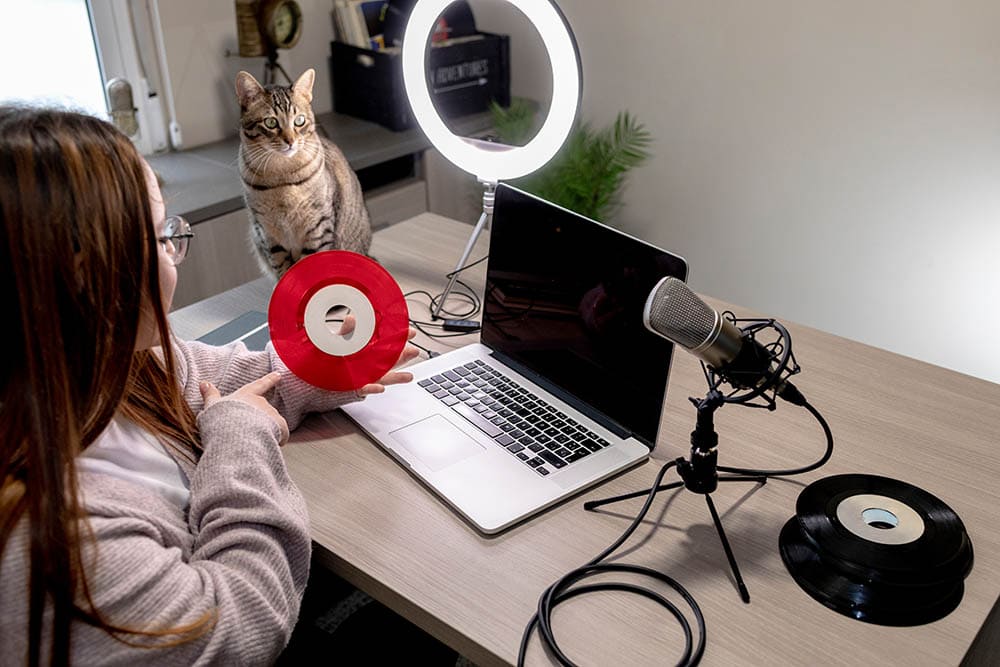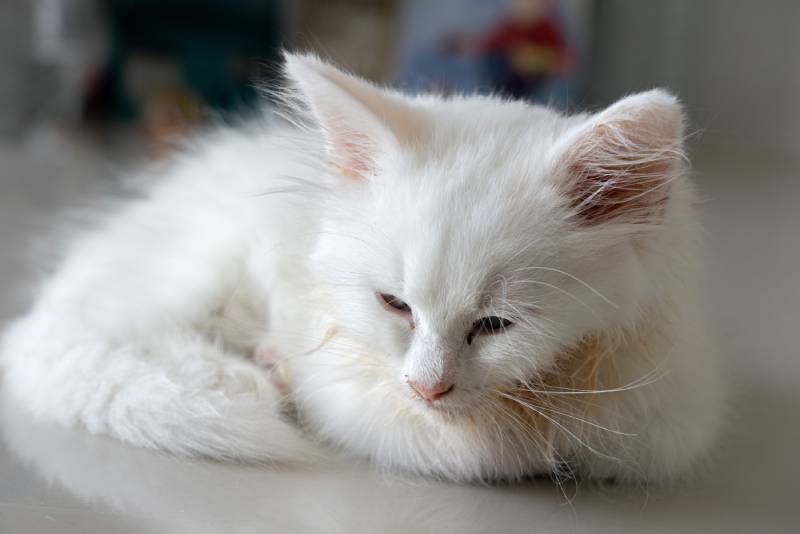Can I Bring My Cat on a Plane? Airlines That Allow It & Policies
By Hallie Roddy
Updated on
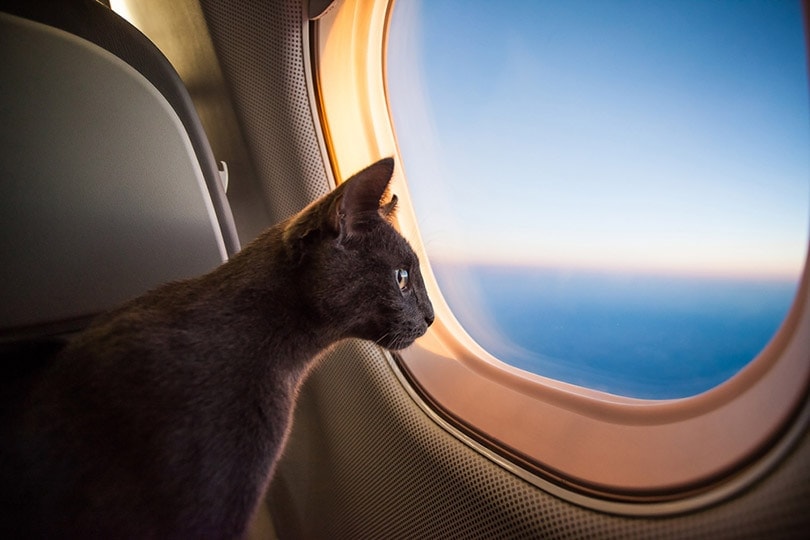
The first time flying with a cat can be a confusing and anxious experience for you and your pet. Like any new experience, there are many unanswered questions and things to do before your big trip. Will your cat feel scared? Can they stay in the cabin with you? How are you supposed to get a cat through security?
Don’t worry too much. It is possible to bring your cat on a plane. Once you have the right information, you’ll know exactly what to do before stepping foot in the airport. This informative article answers some of the most common questions regarding air travel and felines.
Two Ways for Cats to Fly
There are two ways for you to travel with your cat. You can bring your cat onto the plane with you or check them into the plane’s cargo area. The better choice is to bring them to the cabin with you whenever possible. It’ll make your cat feel safer and calmer if they’re closer to you than in the dark cargo space with the rest of the luggage.
If you have no choice but to put them in the cargo hold, always try to travel on the same flight as your feline friend and avoid as many plane transfers as possible. It’s also wise to avoid flying when it’s too hot or cold out.
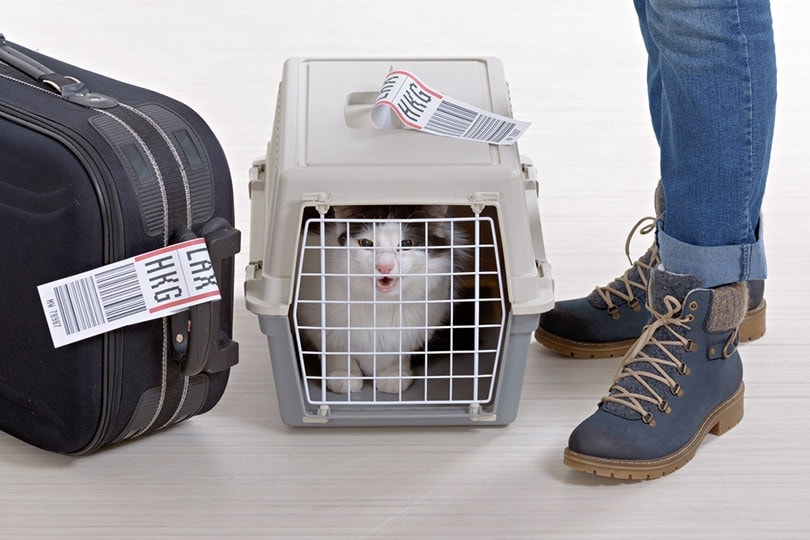
Varying Airline Requirements
All airlines are different and have unique pet policies. Some airlines only allow a limited number of pets in the cabin for every flight. The sooner you book your travel, the easier it will be to secure a place for your kitty and choose a seat that works best for you since cat carriers must always remain under the seat in front of you.
You’ll also need to check with the airlines regarding any fees, restrictions, carrier sizes, or medical requirements in advance. For example, some airlines require cats to be a certain age and up to date on all vaccinations.
Talking to Your Vet
Most airlines require a vet checkup to ensure your pet is healthy enough to fly. Some vets might not allow pets with shorter faces and nasal passages to fly in the cargo area. It’s best to have the most up-to-date paperwork in case the airline asks to see your documentation.
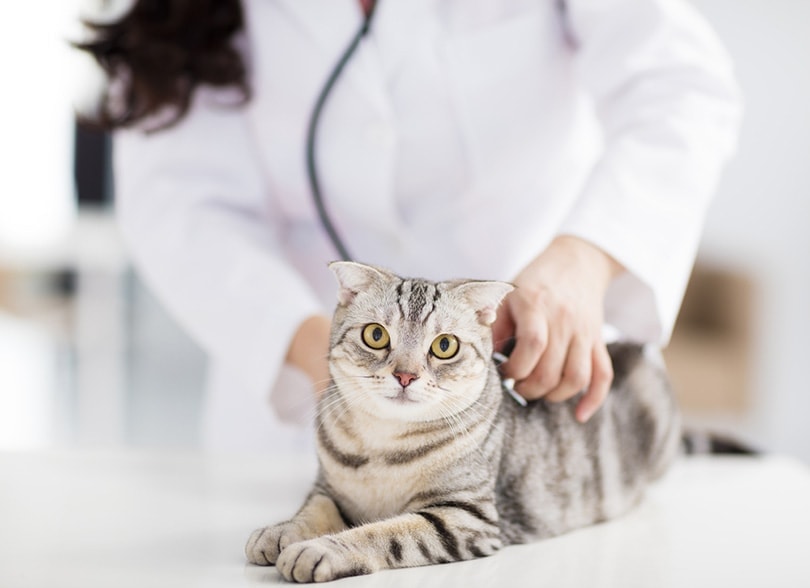
Preparing to Travel with a Cat
Some of the essential items you’ll need while planning a trip are all your paperwork, tags for your cat, their carrier with vaccination statuses and contact information, and a sturdy harness that keeps your pet from wiggling out of it if they’re scared. Some people even bring a picture of their cats with them in case they become separated.
Carrier Training
The carrier is one of the most important aspects of flying with pets. You might already own one, but airlines require the carriers to fit specific dimensions and won’t let your cat travel if this requirement isn’t met. Once you’ve purchased the right size, start carrier training right away.
Give your cat plenty of time to be around the new carrier. Place a few treats inside it and let them go in and out on their own. You might even put their favorite blanket or toy in there to show them that it’s a safe space.
By the time your trip comes, put a few pee pads on the bottom in case they have accidents in the air. Always pack a few extras in your carry-on as well. Don’t forget to pack extra food, water, travel bowls, travel litter, and any medication they require.
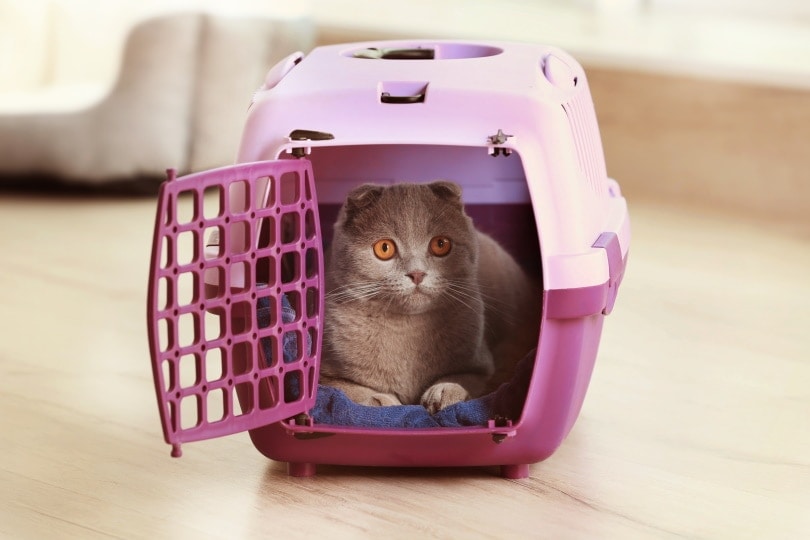
The Day of the Flight
The time has come, and you’re ready to head to the airport. Cats are more likely to get sick if they’ve eaten before a flight. Refrain from feeding your cat a few hours before the trip to prevent motion sickness. If you’re short on time, start packing all your supplies the night before so you don’t feel as rushed.
At the Airport
The process of getting on the plane isn’t too complicated. Go to the airline counter when you first get to the airport and give them any required documentation. From there, you’ll go to security. Most airports need you to remove your cat from the carrier, send the carrier through the screening machine, and have you walk through the metal detector while holding your cat.
Once everything is cleared, you can safely return them to their carrier. You’re now ready to board the plane. When your flight is over, give your kitty lots of treats, pets, and encouragement. They might be a little scared and want to hide for a while, so let them adjust to their new surroundings on their own time.
The 5 Airlines and Pet Policies
Every airline has a unique pet policy. Some of the policies are similar, while others are more unique. Check the airline’s pet policies before every flight—even if you only fly with one airline. You never know when their policies might change.
1. American Airlines
Your pet’s breed, size, age, and destination must all meet the requirements provided by American Airlines. This airline only allows pets to travel on flights for up to 12 hours to specific locations. Carry-on pets are limited to cats and dogs and cost $125 per kennel. Cargo pet prices vary and are confirmed at the time of booking.
2. Delta
Small dogs, cats, and household birds can travel inside the cabin with Delta. They charge a one-way fee of $75–$125. All pets must be 10 weeks old for domestic travel and 16 weeks old for international travel. Female cats and dogs may travel with un-weaned litters if the litter is between 10 weeks and 6 months of age, with no limit on the number of animals in the litter.
3. JetBlue
Small cats and dogs can travel in the cabin if put in an FAA-approved carrier. Only one pet per customer is allowed. The pet fee is $125 each way, with a limit of six pets per flight. Vaccination requirements for traveling pets vary from state to state.
4. Southwest
Pets cannot travel in the cabin for international flights through Southwest. They are accepted on a first-come, first-served basis with a maximum capacity of six pets per flight. There is also a limit of one pet carrier per paying customer.
Pets that engage in disruptive behavior, such as growling, biting, excessive whining, barking, urinating, or defecating in the cabin or gate area may be denied boarding. There is a $95 pet fee each way, but they are refundable.
5. United
Pets are only allowed in the cabin on select United flights. The fee for a pet is $125 each way, with an additional $125 charge for every stopover more than 4 hours in the United States. Puppies and kittens must be at least 2 months old for domestic flights and 4 months old with rabies vaccination for international flights.
Final Thoughts
Those who have never traveled with a pet might be a little anxious leading up to the big day. Thankfully, most airlines make the process as easy as possible and provide all their policies and requirements on their websites. If you have further questions, make sure to reach out to the airline ahead of time instead of leaving it until the last minute and potentially being denied boarding access. If you plan ahead, the entire process should be a breeze.
You might also be interested in:
- How Far Can a Cat Travel in One Day? What You Need To Know!
- How to Fly With a Cat: 7 Vet-Approved Travel Tips
Featured Image Credit: Photo Spirit, Shuttestock


